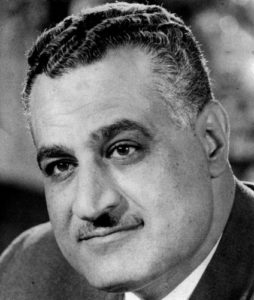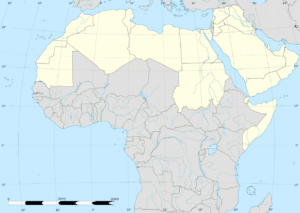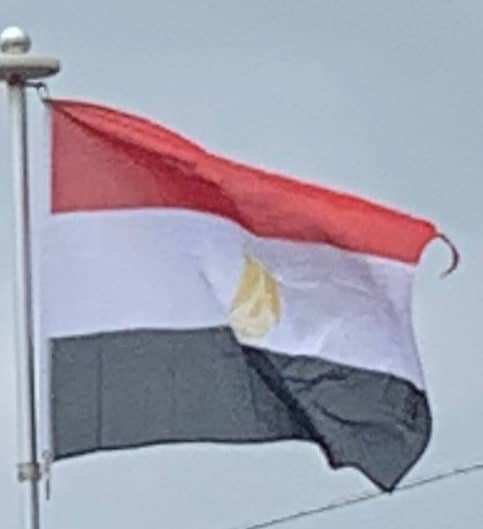
Popular expectations for immediate reforms led to the workers’ riots in Kafr Dawar on 12 August 1952, which resulted in two death sentences. Following a brief experiment with civilian rule, the Free Officers abrogated the monarchy and the 1923 constitution and declared Egypt a republic on 18 June 1953. Naguib was proclaimed as President, while Nasser was appointed as new Prime Minister.
Arab Republic of Egypt (1953–Present):
Following the 1952 Revolution by the Free Officers Movement, the rule of Egypt passed to military hands and all political parties were banned. On 18 June 1953, the Egyptian Republic was declared, with General Muhammad Naguib as the first President of the Republic, serving in that capacity for a little under one and a half years.
President Nasser (1956–1970):
Naguib was forced to resign in 1954 by Gamal Abdel Nasser – a Pan-Arabist and the real architect of the 1952 movement – and was later put under house arrest. After Naguib’s resignation, the position of President was vacant until the election of Gamal Abdel Nasser in 1956.

In October 1954 Egypt and the United Kingdom agreed to abolish the Anglo-Egyptian Condominium Agreement of 1899 and grant Sudan independence; the agreement came into force on 1 January 1956.
Nasser assumed power as President in June 1956. British forces completed their withdrawal from the occupied Suez Canal Zone on 13 June 1956. He nationalised the Suez Canal on 26 July 1956; his hostile approach towards Israel and economic nationalism prompted the beginning of the Second Arab-Israeli War (Suez Crisis), in which Israel (with support from France and the United Kingdom) occupied the Sinai peninsula and the Canal. The war came to an end because of US and USSR diplomatic intervention and the status quo was restored.

In 1958, Egypt and Syria formed a sovereign union known as the United Arab Republic. The union was short-lived, ending in 1961 when Syria seceded, thus ending the union. During most of its existence, the United Arab Republic was also in a loose confederation with North Yemen (or the Mutawakkilite Kingdom of Yemen), known as the United Arab States. In 1959, the All-Palestine Government of the Gaza Strip, an Egyptian client state, was absorbed into the United Arab Republic under the pretext of Arab union, and was never restored. The Arab Socialist Union, a new nasserist state-party was founded in 1962.
In the early 1960s, Egypt became fully involved in the North Yemen Civil War. The Egyptian President, Gamal Abdel Nasser, supported the Yemeni republicans with as many as 70,000 Egyptian troops and chemical weapons. Despite several military moves and peace conferences, the war sank into a stalemate. Egyptian commitment in Yemen was greatly undermined later.

In mid May 1967, the Soviet Union issued warnings to Nasser of an impending Israeli attack on Syria. Although the chief of staff Mohamed Fawzi verified them as “baseless”, Nasser took three successive steps that made the war virtually inevitable: on 14 May he deployed his troops in Sinai near the border with Israel, on 19 May he expelled the UN peacekeepers stationed in the Sinai Peninsula border with Israel, and on 23 May he closed the Straits of Tiran to Israeli shipping. On 26 May Nasser declared, “The battle will be a general one and our basic objective will be to destroy Israel”.
